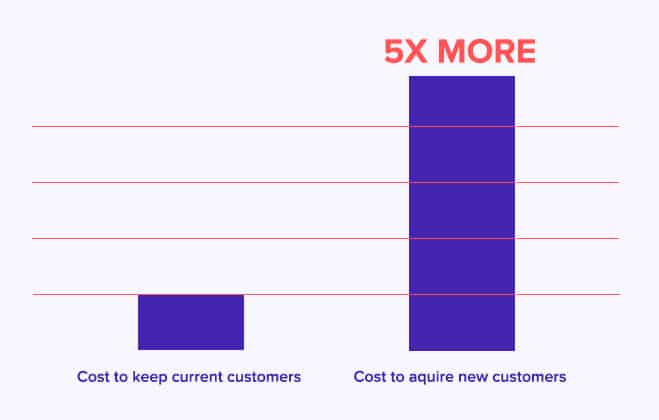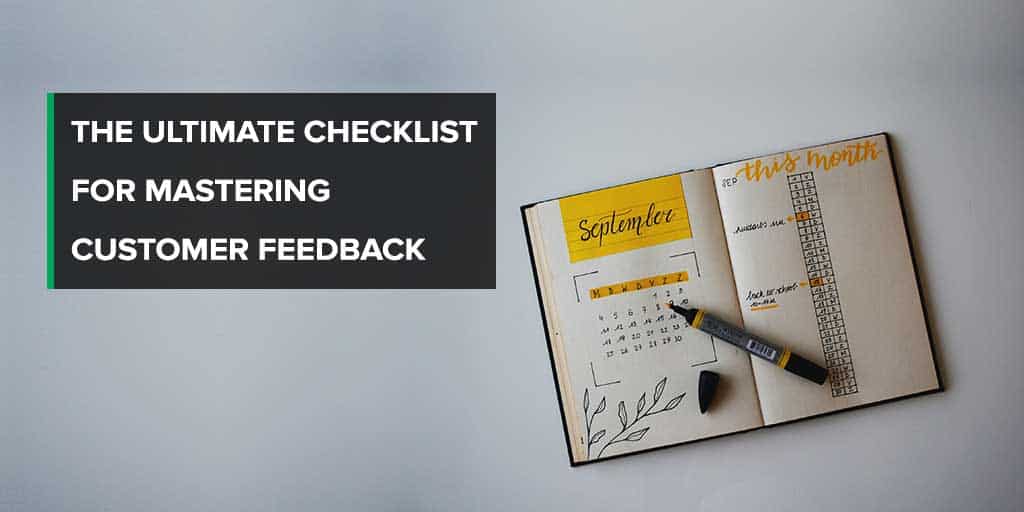If you’re looking for a way to get fresh ideas for your products and services, increase your customer retention, and ultimately make more money, consider investing in customer feedback. Many businesses are increasingly relying on customer feedback to give them essential information about their customers and products. However, in order to master the domain of...
If you’re looking for a way to get fresh ideas for your products and services, increase your customer retention, and ultimately make more money, consider investing in customer feedback.
Many businesses are increasingly relying on customer feedback to give them essential information about their customers and products. However, in order to master the domain of customer feedback, there are some important details you need to know. We’ve broken down a few of the essential facts into a quick cheat sheet that will help you to master the art of receiving and analyzing customer feedback. Check it out below.
Your customer feedback checklist
Step 1: know the facts
Did you know…
- Taking care of your current customers is a far better way to make money than trying to acquire new ones
- Obtaining customer feedback leads to happier customers and better business
- More and more companies are investing in customer feedback

Step 2: ask yourself important questions
QUESTION: Who am I asking for feedback?
Consider:
- Which customers are you targeting with your survey?
- Why are you targeting them?
- What do you already know about them? What do you hope to find out?
To answer these questions, look at your buyer personas and do a little market research about your industry. It’s essential to know who you are talking to in order to make an efficient survey.
QUESTION: Why am I asking for feedback?
Consider:
- What is the purpose of obtaining this feedback? Do you want to answer a specific question about your business, or get a general overview of your customer satisfaction?
- What are you going to do with this feedback? How will it help you make your business better?
Asking yourself this “why” before getting started will save you a lot of time and energy. Knowing the why behind what you’re doing will not only allow to be more focused on your final goals, it will keep you from wasting time getting sidetracked by details or survey questions that won’t ultimately be useful to you.
QUESTION: How will I ask for this feedback?
Consider:
- The different survey types available like NPS surveys or more targeted surveys.
- Most businesses rely on social media or email to send out surveys, but businesses armed with multichannel feedback strategies experience higher and more consistent levels of customer satisfaction than those without. What channel will you use, and how will you use it?
- Do you have survey software that can help you facilitate and automate the process?
Having the right tools and resources can be the difference between an effective, informative survey and a throw-away survey that your customers don’t fill out and that doesn’t deliver the data you need. Most companies find that it is worth it to invest in smart survey software if you are serious about using surveys as a legitimate tool to improve customer expe
rience.
QUESTION: What am I asking?
Consider:
- Keep the survey short, clear, and efficient to prevent survey abandonment.
- Ask open-ended questions that will give the customer time to express their concerns.
- Ask questions that will help you understand your customer.
The best way to filter your questions is simply to ask yourself, “If I were the customer, would I take the time to fill this out?” Make sure your surveys are as pain free as possible.
Step 3: take action
- Time to create your survey and comprise your contact list.
- Check for spelling errors and flow of language before sending your survey out.
- Enable targeted smart responses to survey questions before you send out.
- Assign team members for each step of the survey process.
This is one of the most important steps, and the step where you are most prone to make mistakes. Take your time and make sure your survey sends in the correct format and is user-friendly and accurate.
Step 4: analyze
Once you get your data it will be time to analyze your findings. Without this step, conducting surveys is essentially useless. With some surveys, it will be very straightforward what to do with the information, as you will be looking to answer a specific question with your survey. However, with more open ended surveys like NPS surveys, data analysis will require more qualitative data work and less quantitative. Depending on what survey format you chose, your survey software should provide guidance on what KPI’s and other metrics you should be measuring with your responses.
This is also the stage where follow up may be required. If your NPS survey reveals that someone had a bad customer experience during their last visit, the last thing you want to do is leave that concern unaddressed. Follow up and do what it takes to turn negative feedback into positive before your customers leave.

Step 5: repeat
It’s important to conduct surveys regularly so that you can benchmark your progress over time. Survey results will vary based on the season and the most recent experience your customers had with your product before taking the survey. To get a truly accurate read on your customer’s mindset, it’s important to send out surveys relatively often. However, sending out surveys too often can be bad for the customer experience, so make sure to find the right balance.
Follow the steps above and you should be on your way to becoming a customer feedback master.








